Edentulism - reconstruction of entire dental arches

Complete smile reconstruction / rebuilding based on implant treatment is our specialty!
Why?
-
Several years of experience (over 10,000 implantations).
-
Original, constantly developing program of immediate load for both the upper and lower arch at the same time (during one visit!).
-
Fully digital visualization of future treatment.
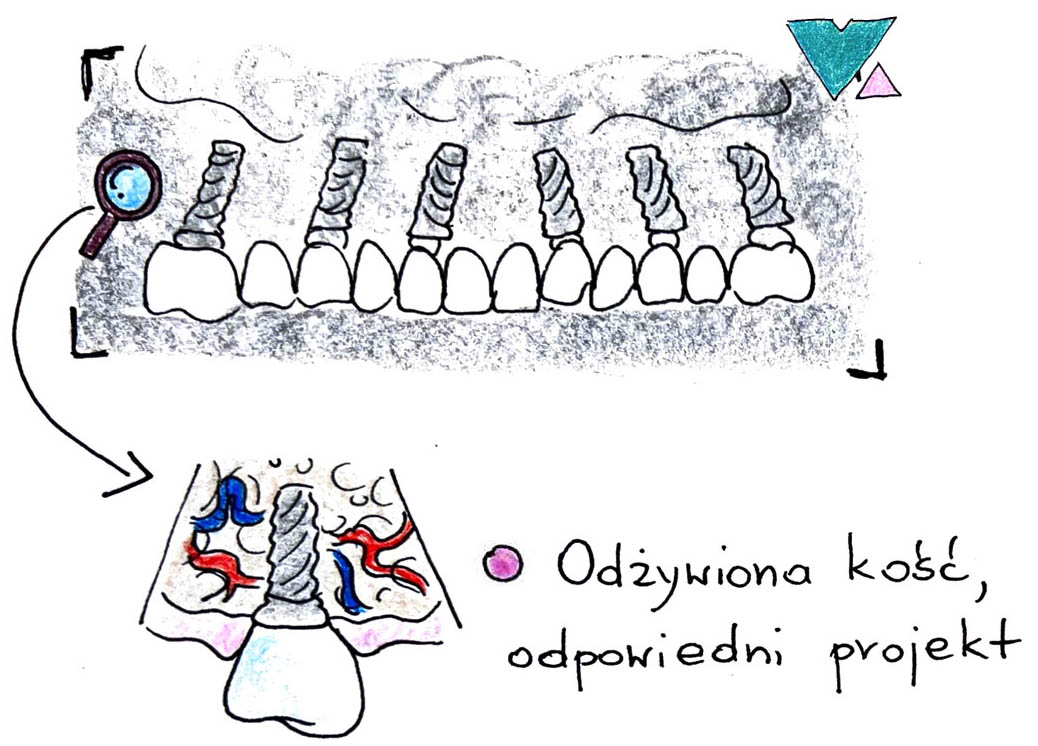
Full arch reconstruction using 4 or 6 implants.
In the case of complete tooth loss (edentulism) or residual dentition, to restore a smile we can apply a full tooth reconstruction on implants.
It should be clarified immediately that there is no need to replace each tooth with a single implant! From a biomechanical point of view, such a solution would even be worse than a reconstruction based on 4 - 8 implants in one arch.
This is due to the fact that there is living bone between the implants, of which there must be an adequate amount. We plan so that in the end there are not more titanium implants than bone.
Comparing this to a "real-life example", we don't need 4 nails to hang one picture on the wall, 2 or even one will suffice (depending on the size of the picture, its weight, etc. - we calculate this precisely).
Working on implants in this case is an alternative to removable dentures - a solution that is mostly not accepted by patients.
The use of implants allows for the restoration of sensations as with natural teeth - during eating, smiling, talking. A removable denture, because it only "lies" on the gums - never provides such sensations.
Remember that dentures are an "invention" from a previous era, and retention, i.e. the way of maintaining classic dental prostheses, has not changed since its development in 1728! Such a solution is archival, outdated and unfortunately - it will not work as well as the currently offered work on implants.
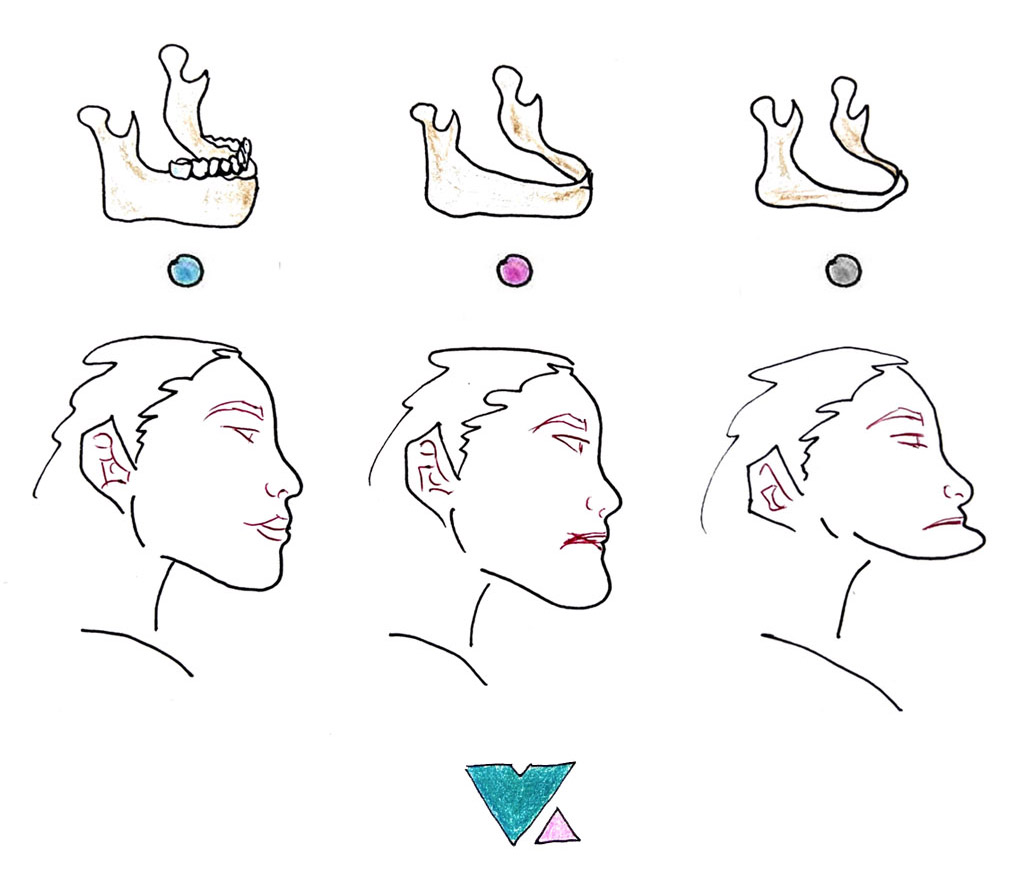
Where do we start?
The most important thing in a complete makeover is the proper alignment of the top (jaw) to the bottom (mandible). As a result of the changes that occur after tooth loss (their displacement, denture settling), the front teeth are most often protruded, and the side teeth are tilted.
In order to properly "arrange" the future bite, it is necessary to design / plan both the top and the bottom at the same time.
We must remember that these are elements that are interconnected and work together. The correct positioning of the teeth on the top is conditioned by the correct positioning of the teeth on the bottom and vice versa.
Therefore, a proper treatment plan should include a comprehensive plan, so that there is no need later to introduce changes and the "necessity" to adapt to compromise conditions.
Of course, the following elements are necessary for planning:
- teeth scans
- CBCT (tomography)
- external / intraoral photos
Next step
We always start with a "trial version" - the mock-up. What does this mean?
A mock-up is a trial version of the future prosthetic work, based on a design made from the analysis of tomography, scans, and external and intraoral photos. The future dentition is matched to the shape of the face, the prominence of the lips, the position of the pupils, the midline, etc.
Using special software, doctors and dental technicians, like architects and engineers, design the patient's future smile, taking into account both aesthetics and functionality.
Depending on the patient's clinical situation - we have the following possibilities:
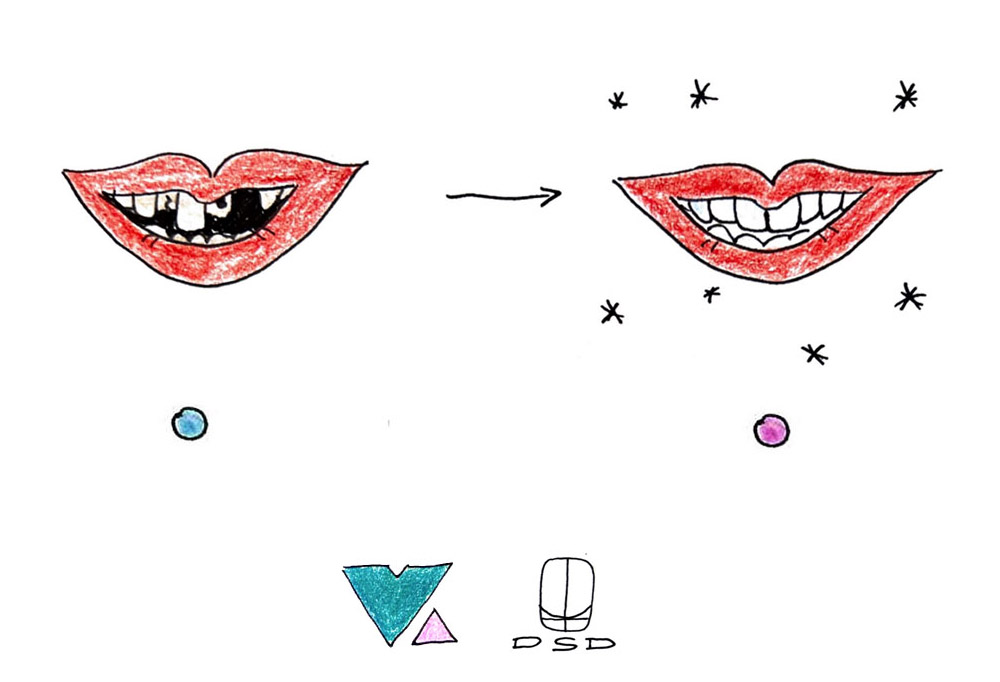
a) In the case of having partial dentition, if conditions allow it
(No mobility of natural teeth, no excessive forward tilt of teeth)
We try on the future dentition in the patient's mouth based on the project.
The test version is "stuck" onto the natural teeth with a special composite material (for creating temporary works), which shows what the final teeth and bite will look like.
It allows the patient to "go home in the test version" - so that they can calmly, without time pressure, see themselves in new teeth, ask for an aesthetic assessment from family, friends. Check the bite over a longer period than a dentist's visit, potential sensations from the joint side.
At the same time, the temporary material allows the dentist to easily remove the work, which makes it possible to change the project, try on the next one - so that it meets the expectations of both the patient and the attending physician.
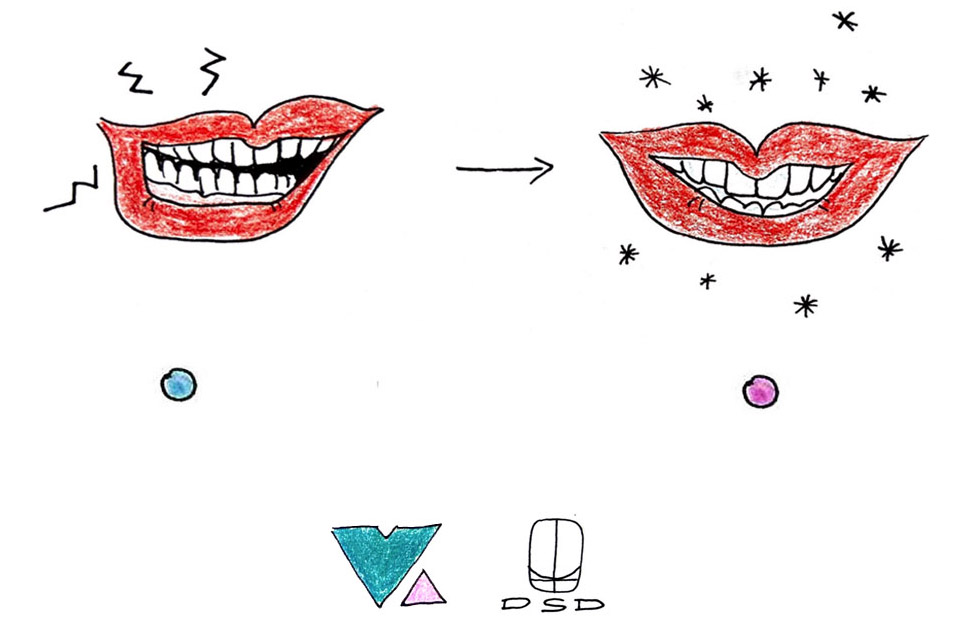
b) In the case of toothlessness, the preparation of a new work most often requires modification of existing removable dentures.
Then we make new test dentures based on the mock-up project. The patient can see themselves in them, check how their new teeth are set, what shape they have, how they look.
Of course, just like in the example above, the patient also takes such dentures home - to show their family, to consider whether the new shape, bite meet their expectations.
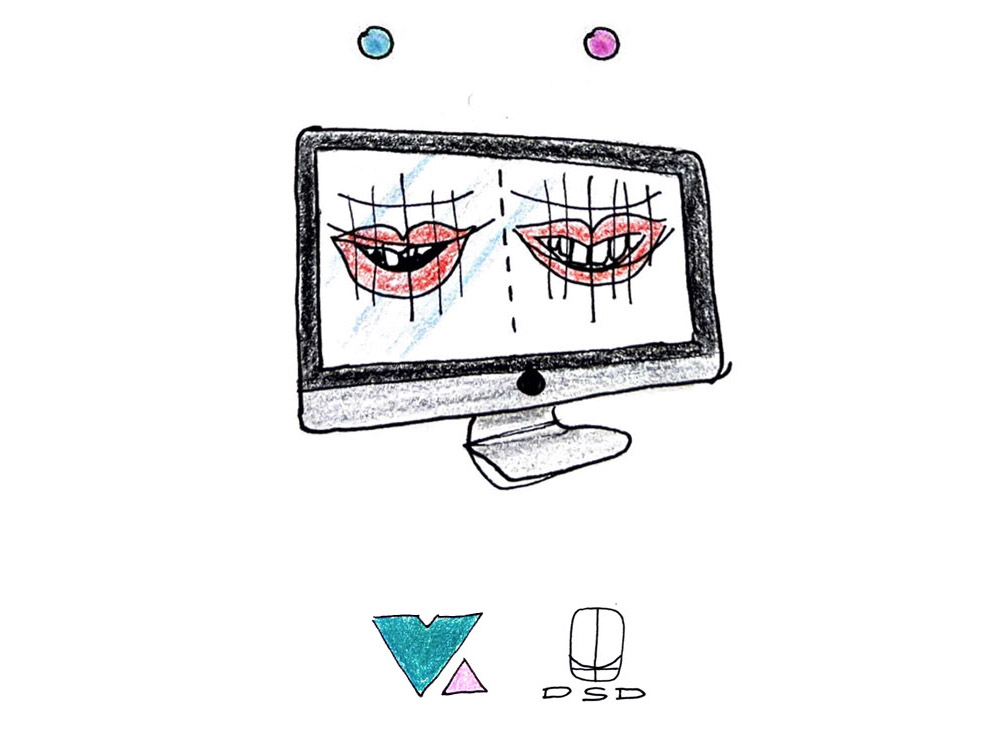
c) In cases of partial dentition, when conditions for setting up a mock-up are not met:
The project is carried out digitally and discussed with the Patient in front of a computer monitor with a full visualization of their smile.
Why can't we sometimes apply a trial version?
-
This happens when the Patient has very loose natural teeth, and in the case of applying temporary work, it could lead to accidental removal of the current teeth (this applies to very large inflammatory conditions, loose, old prosthetic works).
-
In cases where the remaining teeth are so strongly protruding forward that it is not possible to retract them with temporary work, without prior removal.
-
In the case of resorption (root atrophy) of teeth, which could also lead to their loss before the work is done.
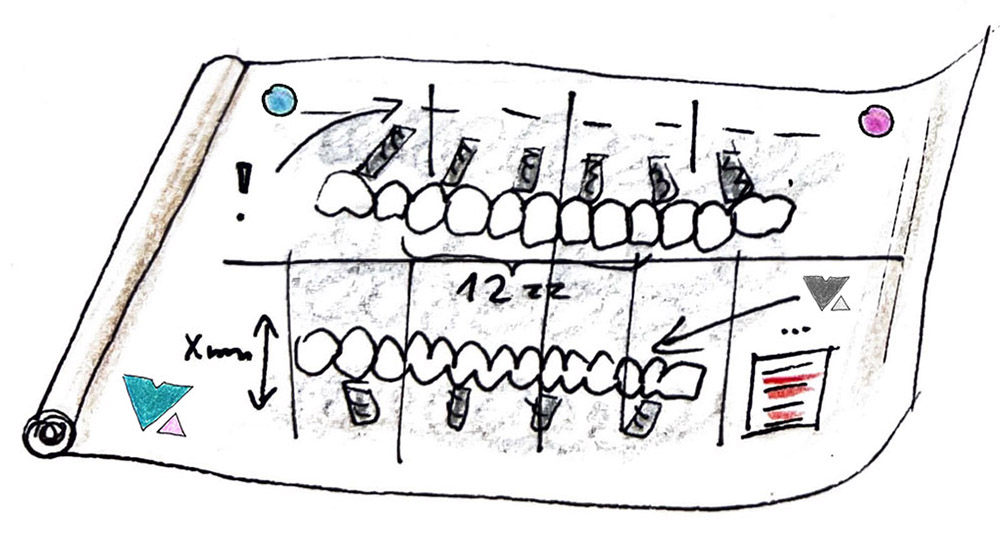
Why are fittings and testing so important?
According to the principle that every 10 minutes of planning saves many hours of implementation, which applies in every industry - starting from construction and ending in the financial market.
A very important aspect, especially in the field of aesthetics, is the fact that the height and width of the teeth provide proper support for the lips and cheeks, giving them the correct shape. Lack of teeth, on the other hand, causes these structures to collapse, giving a "aged" appearance.
The same goes for the height of the entire lower section of the face - often after proper dental treatment, we achieve an aesthetic effect comparable to plastic surgery - taking 10 years off the patient.
That's why planning is so important!
The aesthetics of prosthetic work alone often make patients become "new versions of themselves". This often triggers an avalanche of other positive changes in the patient's life. It's important to meet their expectations and be mutually satisfied with the result (remembering that beauty, broadly understood, means something different to everyone, so it's very important to consult and discuss the needs of patients).
Is the trial version only needed for planning aesthetic issues? Can I skip it?
From a medical (surgical, prosthetic) point of view, the test version is even more important!
a) It allows for the most optimal placement of implants - enabling the best distribution of forces acting on the final work and shows where bone reconstruction (augmentation) is necessary.
b) It enables the design of the precise transition of crowns into the gum, correctly oriented in space.
c) It allows for immediate loading with a perfectly fitting bite.
In short - thanks to the precise project, the implantologist performs the procedure first virtually - seeing all necessary additional procedures.
Thanks to this, the surgical procedure is certain, faster - without any element of surprise.
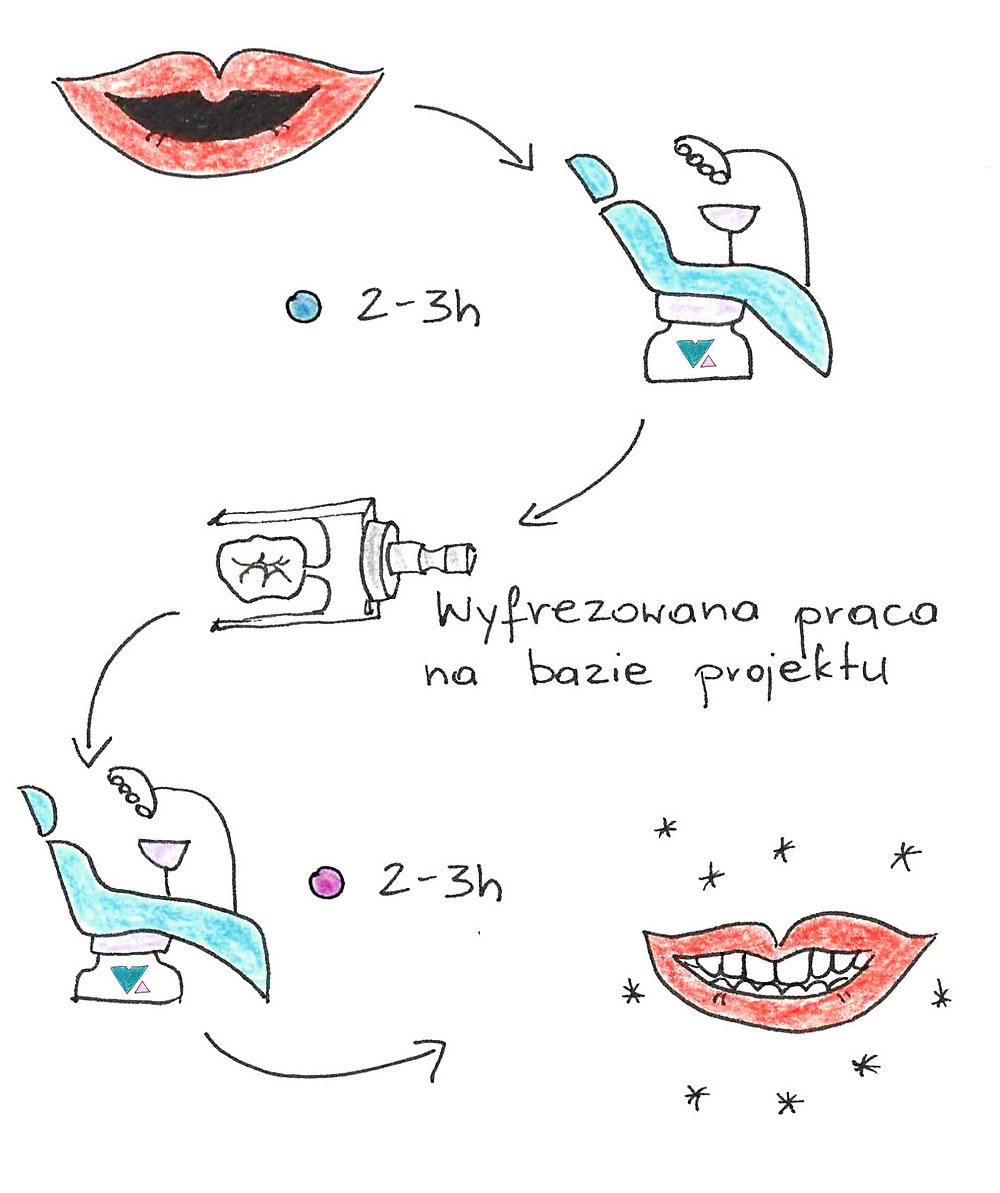
The day of the procedure, or a metamorphosis in just one day!
Once everything has been thoroughly checked, planned, and accepted - the day of implementing the plan comes.
The surgical part itself lasts about 2 hours, including preparing the Patient for the procedure in a pleasant and friendly atmosphere.
The prosthetic part (preparation of screw-on temporary works based on embedded implants) along with rest after the procedure is another 2 hours.
The entire treatment, depending on the clinical situation (e.g. the need for additional procedures such as sinus lift, extractions, bone augmentation), is completed in one day, after which the Patient returns home with a new (temporary) smile.
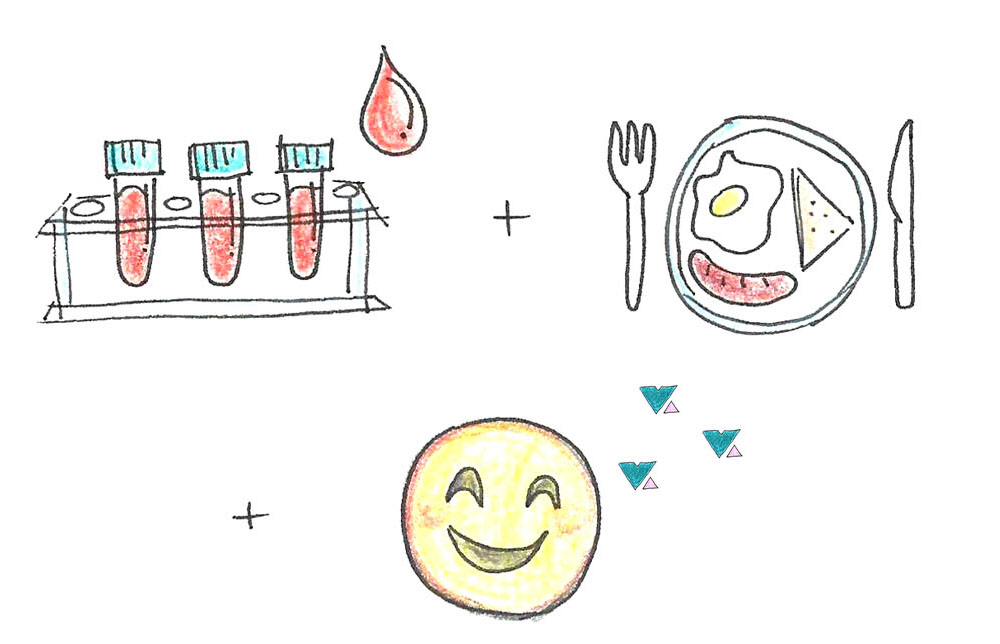
Do I need to prepare in any special way for the procedure?
The entire procedure is a multiplication of a single implantation - so the indications are the same as for a single procedure.
-
Laboratory tests (assessment of coagulation, basic blood parameters)
-
Eating a meal before the procedure (essential! You should not be fasting)
-
A positive attitude.
All painkillers, antibiotic covers, nutridrinks are provided to the patient at the Clinic
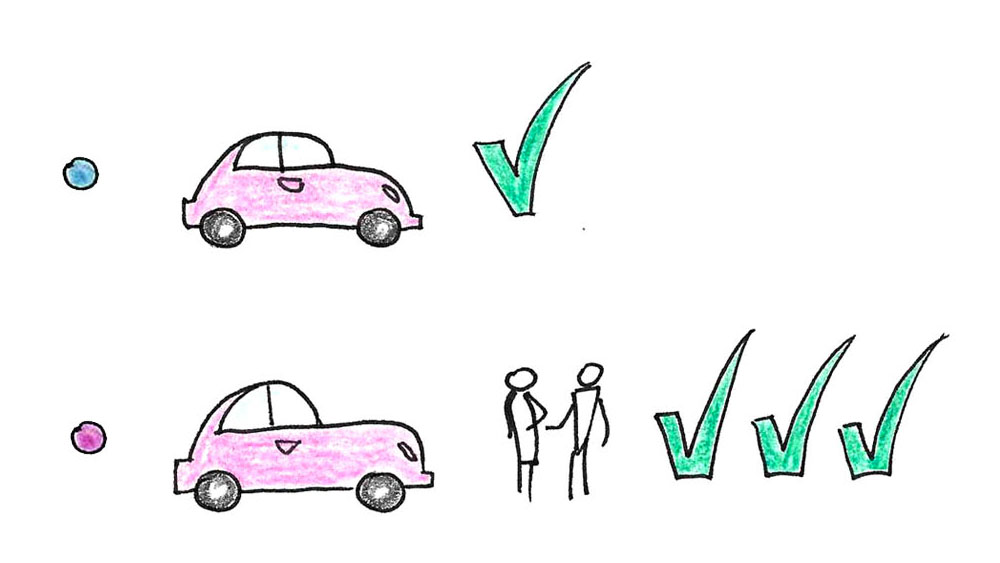
Will I be able to drive a car after the procedure?
All medications and anesthetics administered during the procedure allow for driving. However, we encourage you to come with a companion due to the length and extent of the procedure.
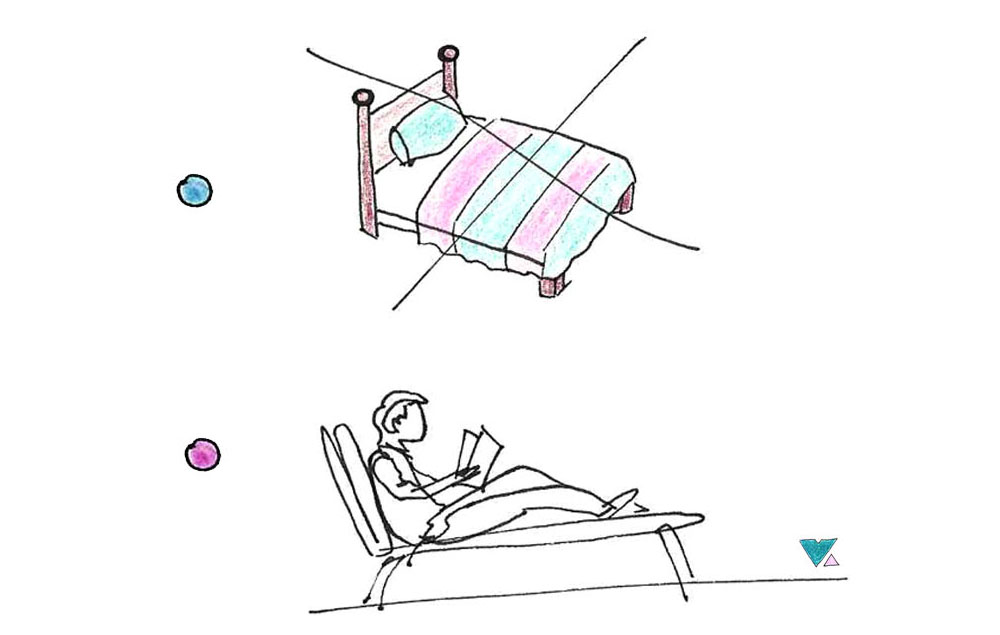
How long after the procedure will I be unable to function? Do I need to stay at home?
After the procedure, there is no need to stay in bed. Depending on the situation (inflammatory conditions, the need for additional bone reconstruction procedures), swelling and mild pain may persist for about 2-3 days.
It should be remembered that in the case of immediate loading of extraction sites - the wound heals faster because it is closed and food does not penetrate it. This is described in more detail (here) - when discussing immediate implantation.
Most patients experience mild discomfort for a period of 2-3 days, which they manage with standard painkillers prescribed after the procedure. If there are any problems, our doctors are at the patients' disposal.
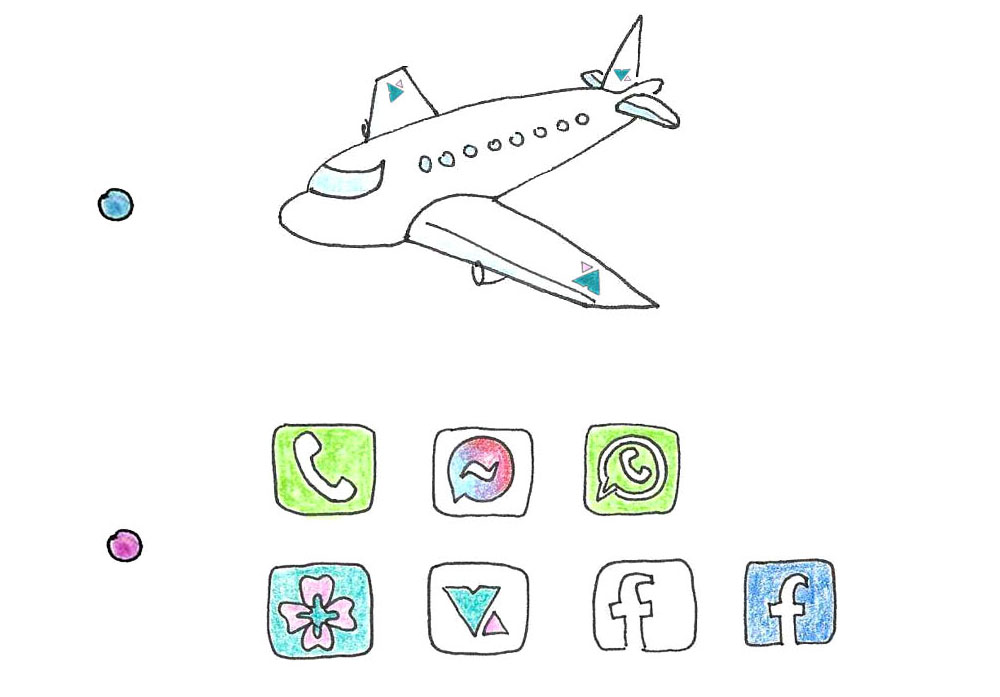
Can I travel to another country the next day?
Many of our Patients live abroad on a daily basis, so we have extensive experience in conducting such treatment.
After the procedure, we recommend that the Patient stay on site for 3-4 days. This is due to the fact that in case of any problems, such as minor bleeding, suture damage - we need to act locally.
Then, after a period of 4 days - you can return to your place of residence. Further visits are scheduled according to the timetable.
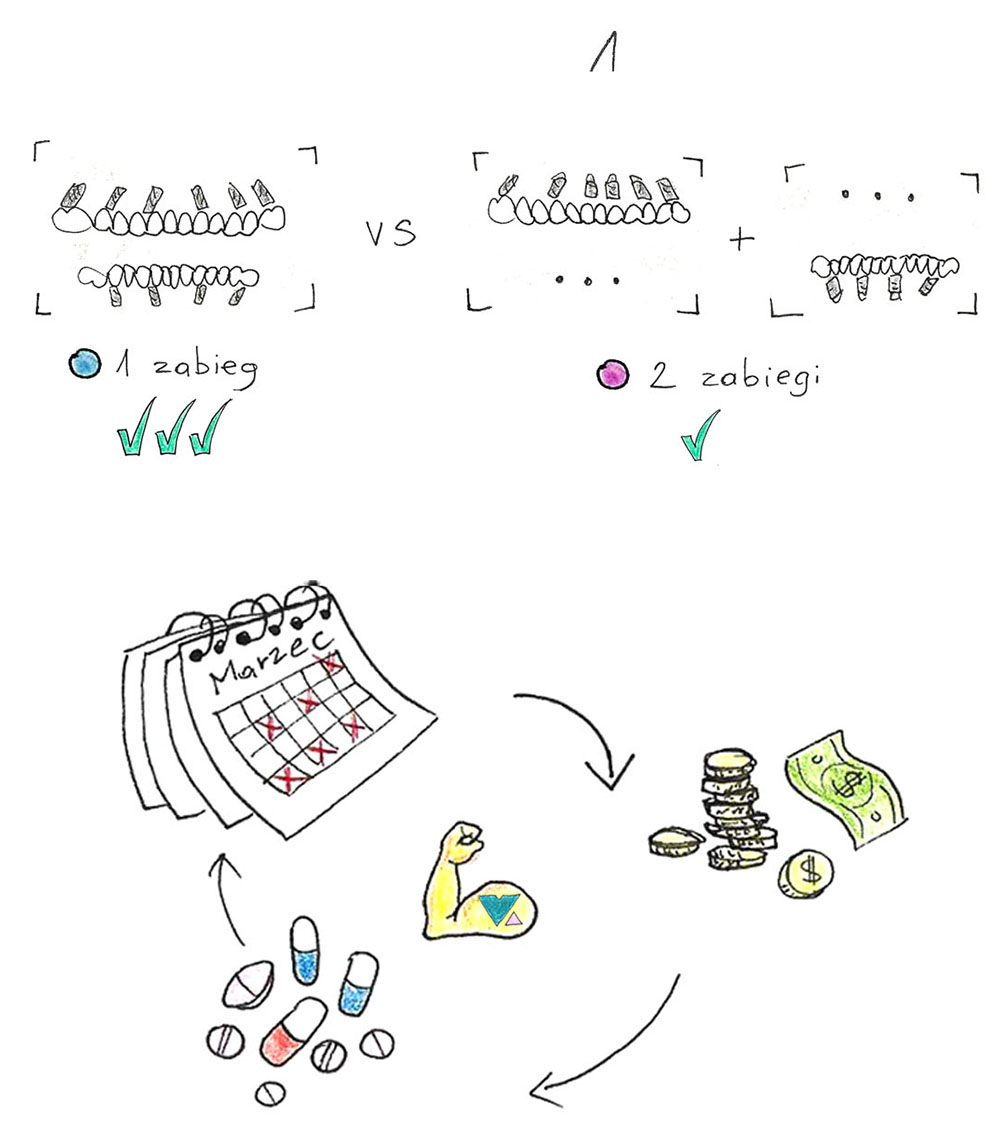
Wouldn't it be better to divide the treatment into upper and lower separately? Isn't it too much strain on my body?
The answer is unequivocal - definitely not.
a) From a biomechanical point of view, as mentioned at the very beginning, the top must be adapted to the bottom and vice versa. In the case of dividing the treatment into parts, we have to do the top and bottom twice (first adjusting to the "old part", then creating a new one).
b) From a health perspective - we always remove only those teeth that are not suitable for further treatment. Hence - if they have been qualified for removal, it should be done as soon as possible, so that the inflammatory state does not spread throughout the body.
c) The number of additional visits, antibiotic cover, anesthesia, stitch removal increases at least twice due to the separation of these procedures. The treatment also takes longer, which can cause discomfort for the patient.
d) From a medical point of view - through the rehabilitation of the upper and lower arch, we restore proper relations in the joints, muscles, ligaments within the head and neck. All muscles in this area start working properly, reducing tension and overload - such an effect is only possible in the case of comprehensive treatment.
e) The desired aesthetic effect - we achieve only with properly positioned upper and lower teeth. Otherwise, as we mentioned, we have to adapt to the existing conditions.
